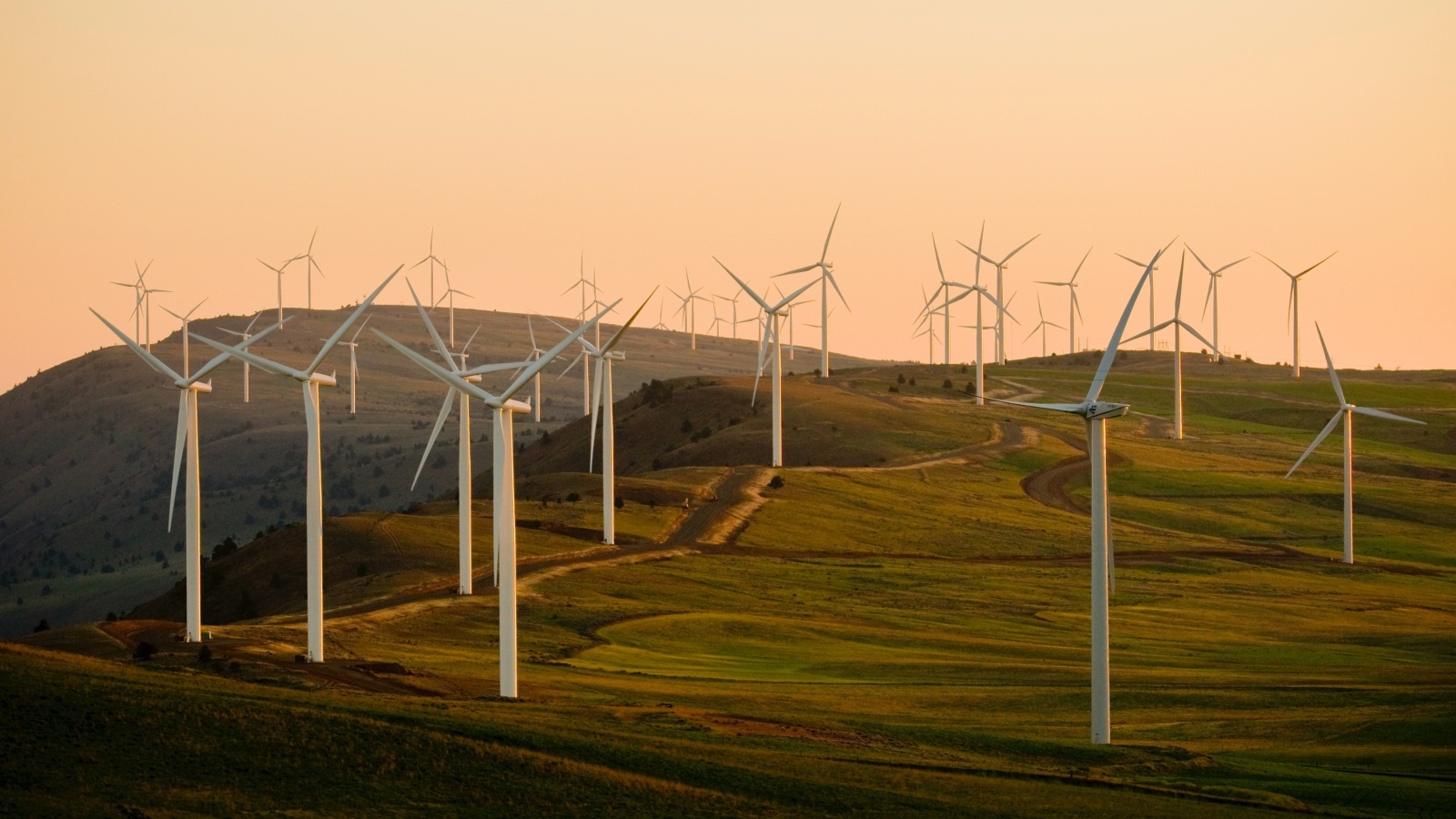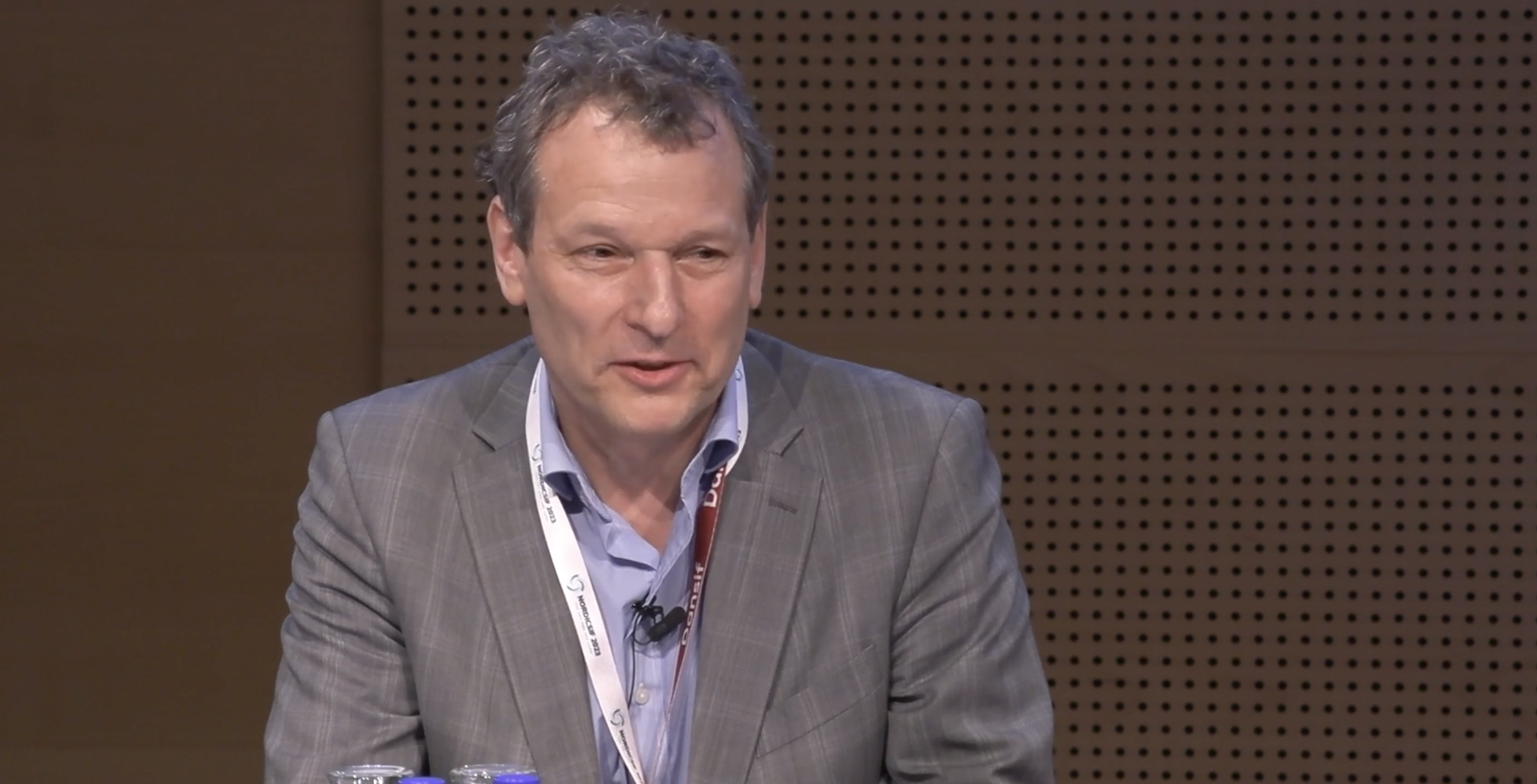
PensionDanmark’s climate boss: Returns in renewables can now be found in new tech
A range of net zero investment leaders spoke about adapting to the 'crowded’ renewables market on the first day of the NordicSIF conference in Copenhagen
High returns are no longer to be gained from traditional renewables sectors such as wind and solar due to a “crowded” marketplace, according to the net zero chief of one of Denmark's largest pension funds.
Jan Kæraa Rasmussen, head of ESG at PensionDanmark, one of the 50 largest pension funds in Europe, told delegates at a conference in Copenhagen he encourages investment in new technologies such as green hydrogen.
“The renewables space has definitely become more crowded, and traditional wind and solar is well matured at the moment, which means that the perceived risks are much lower," Rasmussen said on the first day of the NordicSIF ‘The Sky and the Land’ conference.
"We cannot expect as high real returns from our investments in renewable energy as with a decade ago. This is good for the climate, but for bold investor types, it's not that good," he stressed.
“We’ve tried to respond to this by moving a bit up the risk curve and investing in technologies that should be part of the solutions in the future such as green hydrogen projects and biofuels."
Last month, Rasmussen told Net Zero Investor of PensionDanmark's moves to invest directly in cleantech company Stiesdal and commit to pour €100 million in the CI Advanced Bioenergy Fund I (CI ABF I) to speed up the development of green fuels.
We cannot expect as high real returns from our investments in renewable energy as with a decade ago.

Also speaking at the talk on how to scale and accelerate low carbon energy solutions from an investor perspective was Pernille Jessen, co-chief investment officer at AkademikerPension.
This fund started exiting its equity holdings of companies involved in upstream oil, gas, coal, and tar sands in 2018, including from firms such as Exxon Mobil and Equinor, and completed its exit with the divestment of $300 million in fossil fuel corporate bonds at the end of last year.
Speaking of AkademikerPension’s continuing adherence to this divestment position in light of markedly increased profits for oil and gas companies since the Russian invasion of Ukraine, Jessen said: “The move comes not only due to an ESG perspective, but also looking at the very long term as a pension investor.
“We think that this area [oil and gas] will be challenged to say at least to change their business models. This reasoning has been a driving element in our exclusion.”
At the event, Kasper Hansen, chief executive of AIP Management, a direct infrastructure investment platform for institutional investors, also spoke of how consumer and investor behaviour could be influenced by areas such as a reliable taxonomy.
According to Hansen, an informed consumer would be willing to pay single digit percentages more for sustainably sourced materials such as steel, “but they have to be able to trust” such claims.
We think that this area [oil and gas] will be challenged to say at least to change their business models. This reasoning has been a driving element in our exclusion.
Energy Solutions
At a talk on scaling and accelerating energy solutions at the NordicSIF event, the Inflation Reduction Act, passed in the US which includes large subsidies for renewables projects, was a source of discussion.
On the IRA, and the “state aid” that it entails, Therese Beate Bording Hermann, public affairs director at energy firm Haldor Topsøe, said: “US renewables projects can now get up to around 50% of investment through federal funding through the IRA."
She argued that “what will happen is that Europe, which has been very good with pilots on a lot of new technologies, will see this harvested by the US. That's a big threat for the green transition on the continent.”
Hermann also noted that Denmark was particularly suspectable to this issue, with economies in Southern Europe also more likely to hand out subsidies for renewables projects.
Also at the NordicSIF event, Michael Lundgaard Thomsen, director of Aalborg Portland, the only grey and white cement producer in Denmark, spoke of challenges in abating emissions in the sector.
One date he was paying attention to was 2026, when EU importers are to be required to purchase certificates equivalent to the weekly EU carbon price, thus preventing emissions from simply being diverted outside of the region rather than actually eliminated.
“At this point all cement and raw material goes onto the same platform, and then I believe it will be a huge change. You cannot just go and buy cheap buy cement in Egypt or Turkey, because you will be under the same regime on the on the tax system”, he said.
In March this year, the Global Cement and Concrete Association spoke to Net Zero Investor upon the launch of an Open Challenge partnership program, inviting startups to help the sector on its path towards net zero, primarily by coming up with new cost-effective materials and ingredients for low carbon concrete.




